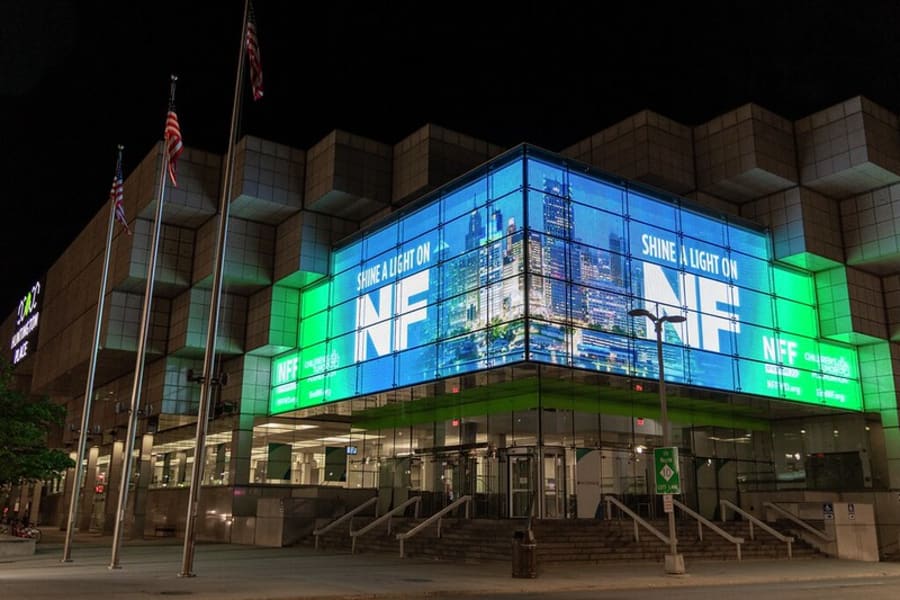Neurofibromatosis (NF), a rare genetic disorder that strikes at the very fabric of human health, weaving tumors along nerves throughout the body. Despite its rarity, NF’s impact is profound, affecting millions worldwide with its different manifestations and challenges.
Among those leading the charge in combating the formidable adversary is the Gilbert Family Foundation, whose unwavering commitment to NF research is a beacon of hope for countless families.
Understanding NF
NF encompasses a group of genetic conditions, with NF1 being the most prevalent form, affecting approximately 1 in every 2,500 births. Its hallmark features include café-au-lait spots, freckling in specific areas and neurofibromas -- benign growths on or under the skin.
NF can lead to a myriad of complications, including sensory impairments, bone abnormalities, learning disabilities and even cancer.
“NF1 tumors are typically benign, but people with NF1 have a higher risk of developing cancerous tumors than those without the condition,” said Kalyan Vinnakota, PhD, director of Curing NF, with Gilbert Family Foundation. “Benign NF1 tumors can spontaneously metastasize to something called an MPNST (malignant peripheral nerve sheath tumor).”
NF doesn’t discriminate; it affects individuals across all demographics, often appearing unexpectedly in families with no prior history of the condition.
Advancements in research
NF1 is a complex puzzle with no easy solution. While there’s only one FDA-approved drug for its treatment, the landscape of NF research is evolving rapidly.
Over the years, significant strides have been made by identifying the molecular origin of NF1 and some of the biochemical pathways that go awry, leading to tumor formation. This provided a basis for identifying potential drug candidates and the development of animal models for preclinical testing.
Vinnakota said studies on the natural history of the disease in patients have played a key role in clinical trials that led to the first FDA-approved drug for a specific indication of NF1.
“All in all, the efforts to find effective treatment for NF! Have been broad -- from understanding disease mechanisms to producing animal models of the disease to conducting clinical observational studies,” she said. “With this new investment in next-generation models, we are focused on developing a different kind of preclinical organoid model. While animal models of NF1-associated tumors are important for discovering and testing new treatments, they may not capture disease-related mechanisms specific to humans. Organoids could bridge this gap between animal models and human patients.”
Organoids are 3D cell culture models derived from human pluripotent stem cells that summarize key developmental aspects of the tissue being modeled. These models of NF1 have the potential to offer insights on a more personalized basis by examining the specific tissue from a specific clinical manifestation of NF1.
“Organoid models are more faithful to human tissue physiology and more tractable for drug screening,” Vinnakota said. “These models reduce the use of laboratory animals in research and are now encouraged by the FDA as having relevance for regulatory approval. The advantage of organoid models is they can be derived from both NF1 tumors and healthy tissues, so potential drug candidates can be evaluated for their impact on the tumor without impacting the healthy tissue, thus reducing the chances of harmful side effects.”
Today, deepening understanding of NF presents unprecedented opportunities for innovative treatments and, ultimately, a cure.
The Gilbert Family Foundation’s crusade

The story of the Gilbert Family Foundation’s involvement in NF research is deeply personal. When their oldest son, Nick, was born with NF1, Dan and Jennifer Gilbert embarked on a mission to change the narrative around the condition.
In 2015, they established the Gilbert Family Foundation, with a pledge to support groundbreaking NF research, regardless of how radical the ideas may seem.
Throughout his life, Nick faced a myriad of challenges because of NF, including multiple surgeries to treat brain tumors. Nick also experienced vision loss from a specific type of brain tumor called OPGs (optic pathway gliomas) that grow on the optic nerve.
Nick was 26 when he passed in May 2023. Now, his legacy lives on through the foundation’s efforts.
To date, the Gilbert Family Foundation and its sister nonprofit, NF Forward, have injected $126 million into NF research. Their initiatives span a broad spectrum, focusing on vision restoration, brain tumor research, gene therapy and the development of next-generation NF1 models.
A beacon of hope: The Nick Gilbert Neurofibromatosis Research Institute

In September 2023, the Gilbert Family Foundation announced a monumental milestone in the fight against NF: the creation of the Nick Gilbert Neurofibromatosis Research Institute (NGNRI). The groundbreaking institute, set to be housed within the Henry Ford Health + Michigan State University research building, marks a significant step forward in NF research.
Leveraging cutting-edge technologies like organoid and assembloid models, NGNRI will pioneer new approaches to understand and treat NF. These in vitro 3D tissue and organ models offer unprecedented insights into the intricacies of NF, provide researchers with invaluable tools to develop targeted therapies and, ultimately, find a cure.
Scheduled to open its doors in 2027, NGNRI will be the first brick-and-mortar institute dedicated solely to neurofibromatosis.
“The creation of the Next-Generation NF1 Models Initiative addresses the need for more advanced models of the NF1 disease, which are key to developing improved treatments,” Vinnakota said. “The preclinical models generated in these projects will ultimately be hosted at the NGNRI when it opens. Because of NGNRI, Detroit will be a hub for NF research that could provide better therapeutic outcomes for patients all around the world.”
Neurofibromatosis may be rare, but its impact is profound. Through the dedication of organizations like the Gilbert Family Foundation and the groundbreaking work of institutions like NGNRI, we stand on the brink of a new era in NF research.
To learn more about NF and the research being done, click or tap here.



